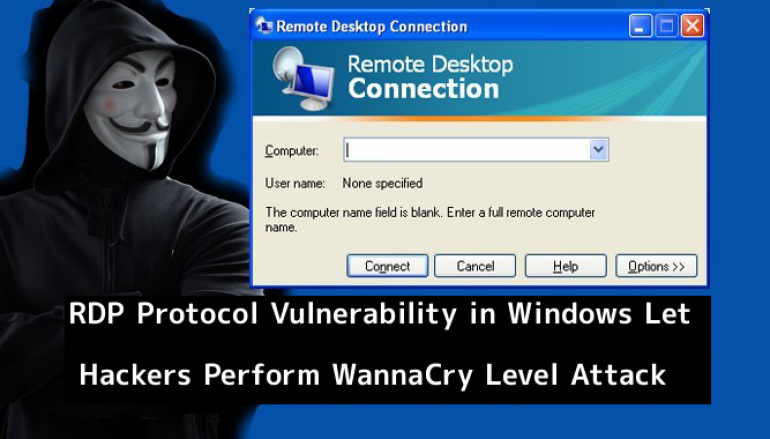
RCE Bug in Microsoft RDP Protocol Let Hackers Perform WannaCry Level Attack on 3 Million Vulnerable Endpoints
A critical remote execution vulnerability in Microsoft remote desktop services enables let attackers compromise the vulnerable system with WannaCry level malware.
Microsoft recently fixed this RCE vulnerability in Remote Desktop Services – formerly known as Terminal Services, and it’s affected some of the old version of Windows.
A WannaCry attack was one of the notorious cyber attacks in this decade, and it shut down million of computer around the world by exploiting the vulnerability in the RDP protocol.
In this case, Remote Desktop Protocol (RDP) itself is not vulnerable, but attackers need to perform pre-authentication, and it doesn’t require user interaction.
This vulnerability didn’t have any exploit at this time, but in the future, an attacker will create a malware that exploits this vulnerability in a similar way of WannaCry attack.
Vulnerable in-support systems include Windows 7, Windows Server 2008 R2, and Windows Server 2008 and also out of support versions Windows 2003 and Windows XP.
Also Learn: A complete Malware Analysis – Advance Malware Analyst Bundle
Initially, an unauthenticated attacker will send the specially crafted malicious request to the vulnerable systems after they establish a connection through RDP.
According to Microsoft, This vulnerability is pre-authentication and requires no user interaction. An attacker who successfully exploited this vulnerability could execute arbitrary code on the target system. An attacker could then install programs; view, change, or delete data; or create new accounts with full user rights.
An Independent researcher Kevin Beaumont said, based on the Shodan search engine, around 3 million RDP endpoints are directly exposed to the internet.
“There is partial mitigation on affected systems that have Network Level Authentication (NLA) enabled. The affected systems are mitigated against ‘wormable’ malware or advanced malware threats that could exploit the vulnerability, as NLA requires authentication before the vulnerability can be triggered.” Microsoft said.
According to Simon Pope, Director of Incident Response, Microsoft Security Response Center (MSRC) “Customers running Windows 8 and Windows 10 are not affected by this vulnerability”.
This post RCE Bug in Microsoft RDP Protocol Let Hackers Perform WannaCry Level Attack on 3 Million Vulnerable Endpoints originally appeared on GB Hackers.






